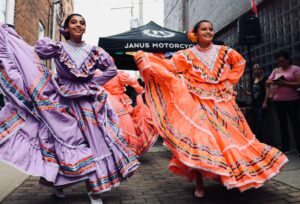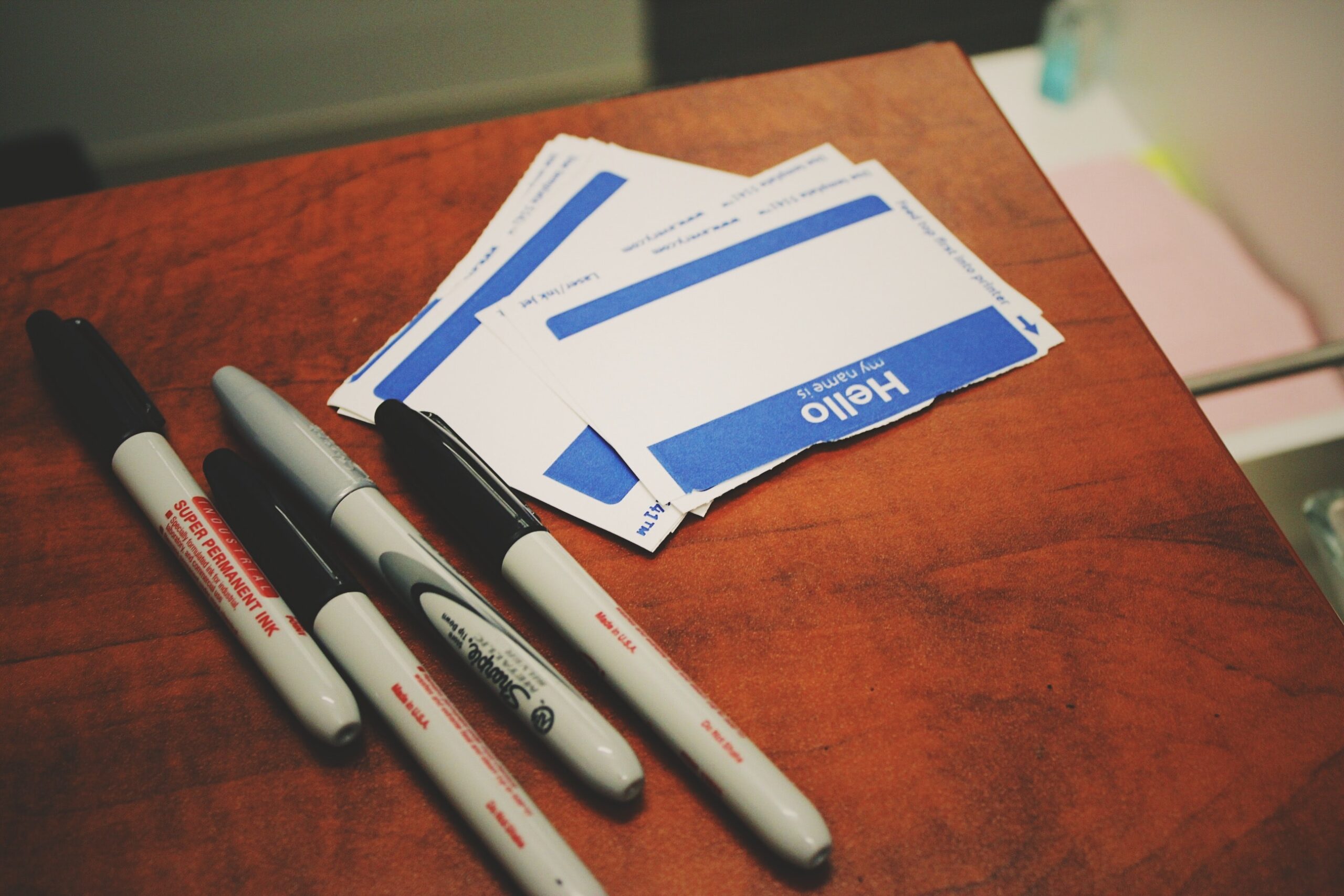By: Antoinetta J. Rogers
“Schooling is the process by which you institutionalize people to accept their place in a society… Education is the process through which you teach them to transform it.”- Dr. Jeff Duncan-Andrade
What’s in a name?
This is a very common and loaded question. Asunción Cummings Hostin, Euphemia LatiQue Sumpter, Uzoamaka Nwanneka Aduba, and Antoinetta Jamika Rogers prove there is always a story behind a name.
Asunción Hostin is an American lawyer and a very intelligent, articulate, and charismatic cohost of the Daytime Emmy Award winning talk show The View. She is commonly known as Sunny Hostin. During an interview with People Magazine, Sunny stated that when she began working on Court TV with Nancy Grace, the famed legal commentator, she had a difficult time pronouncing her name. Acknowledging that Sunny was indeed quite talented, Nancy Grace feared that because most people may find it difficult to pronounce her name that she shorten it to make it easier to pronounce. So, instead of Asunción Hostin, Sunny Hostin is the famous household name. Euphemia LatiQue Sumpter is an American actress. Known for her flair, fortitude, and fascinating role on the highly acclaimed series Tyler Perry’s The Haves and Have Nots, she mentioned in an interview that although she was beautiful and talented the name Euphemia just was not “it.” So, instead of Euphemia Sumpter, Tika Sumpter is the famous household name.

Uzoamaka Nwanneka Aduba is a dynamic, vibrant, and effervescent, Nigerian American actress who is best known for her roles in the Netflix series Orange is the New Black and the film Miss Virginia. She is commonly known as Uzo Aduba. A video surfaced of Uzo stating that she hated her name. The hate seemed to stem from other people having a difficult time pronouncing it. Growing up in a small New England town, she explained that there were not a lot of Nigerian Americans. Uzoamaka means “The road is good.” What was quite noticeable in her candid oration was the visible mentioning of teachers finding it difficult to pronounce her name. One day upon returning home from school, she casually asked her mom to call her Zoey. Her mom simply stated that if people can learn to say Tchaikovsky, people will and would learn to pronounce Uzoamaka.
So, what does an English teacher from a small rural town in South Carolina have in common with the aforementioned Hollywood stars? Antoinetta Jamika Rogers is my name. Nobody calls me by my first name Antoinetta, instead I go by Jamie. Antoinetta has ten letters, four syllables and is often pronounced as (An-tw-un-Et) instead of (An-tw-un-Et-Uh). So, growing up Jamie was more adaptable and easier than Antoinetta. It became my nickname. Nicknames are convenient, but seldom created as a courtesy or in favor of the person in which the shortened name is given. What’s in a name? Absolutely everything! A person’s name is a huge and important part of a person’s cultural identity; therefore culturally responsive teaching is very imperative and quite a necessity to say the least in an ever changing and evolving world.
Culturally Responsive Teaching

Culturally Responsive Teaching is the practice of teaching cultural competence. States and school districts already have educational standards and curriculums established that are usually adjusted and molded according to society’s norms. However, in the classroom it is so important that teachers make it a norm to not only teach, but practice cultural competence. Cultural competence is the ability to understand, communicate with, and effectively interact with people across cultures. One’s own awareness of cultural competence includes developing positive attitudes towards cultural differences and gaining knowledge of cultural practices and world views. I realized that regardless of the demographics of students I teach, classrooms should be increasingly diverse with diverse teaching materials, methods, and strategies. If the demographics are all the same, this does not mean that cultural competence and sensitivity should not be inclusive. All students should feel welcomed into a learning environment that celebrates diversity and multiculturalism. Most curriculums and lessons include an aspect of diversity, but it should be woven into the atmosphere of the classroom.
Real World Implications

According to the Center for the Professional Education of Teachers (CPET), school practices currently reflect the norms of monolingual, white, middle class students, which often excludes students who come from diverse cultural and linguistic backgrounds. Students who are excluded from these norms are often viewed through a deficit lens. South Carolina College and Career Ready Standards are the standards that I am required to use as a certified classroom teacher. So, the overall goal is for students to be prepared to enter an institution of higher learning, the workforce, and/or the military. Not only should students be academically prepared, but students should be culturally prepared as well. Thus, a simple yet complex task of accepting and pronouncing an individual’s name can possibly have an everlasting positive impact.
Society has a habit of associating certain sounding names with certain races and ethnicities. According to the National Bureau of Economic Research Issue No. 9. “Employers’ Replies to Racial Names,” a job applicant with a name that sounds like it might belong to an African-American – say, Lakisha Washington or Jamal Jones – can find it harder to get a job. Despite laws against discrimination, affirmative action, a degree of employer enlightenment, and the desire by some businesses to enhance profits by hiring those most qualified regardless of race, African-Americans are twice as likely as whites to be unemployed and they earn nearly 25 percent less when they are employed. Pronouncing an individual’s name correctly and accepting that the name may have cultural attachment to it is important for the advancement of society.
Classroom Applications

I make sure that I pronounce a student’s name correctly as well as the student’s peers in my class because names represent a heritage, a lineage, and a legacy. This is also common courtesy and a sign of respect. A name is a representation that we should be proud of and not something that anyone, in this case specifically students, should have to worry about changing or shortening in the future, because we live and exist in a society where certain names make people uncomfortable for a quick minute or two. If teachers discuss or present this topic in the classroom and really show and teach through experiments, instructional strategies, and projects, this can begin to turn the tide and become the norm therefore possibly preventing society from having a perception of “racial names.”
The world is a colossal entity that embodies diverse, multicultural, racial, ethnic, and linguistic backgrounds. If students are taught to be culturally competent and responsible people, then as the world continues to progress and move forward, teachers will be a major part of molding and shaping well- rounded culturally aware individuals. Awareness promotes respect and acknowledgement. In foresight, these individuals will not haste to say names such as Asunción, Euphemia, Uzoamaka, and Antoinetta because of their phonetic pronunciation, but make embracing and sharing the importance of all names and all things that represent heritage, culture, and diverse backgrounds the standard.
About the Author

Antoinetta J. Rogers has seven years of teaching experience and currently teaches Secondary English at Richland Northeast High School.

7 replies on “What’s in a Name?”
I absolutely loved reading this piece! Please continue to inspire others with your work. So proud of you Jamie. Continue to follow your passion.
I thoroughly enjoyed the depth of this reading and was left full and satisfied. Antoinetta, continue to inspire and spread cultural awareness and diversity. I am proud of you!
Amazing article! Keep up the great work.
An amazing and very good perspective on the importance of the topic. I thoroughly enjoyed this entry. It was enlightening and eye opening. Definitely walking away with greater insight! Awesome job!
Awesome. Great topic that you brought light too!!
This was a wonderful read and topic! I will share this, and look forward to more of your enlightening pieces. Please continue to inspire and educate! The world needs more people like you, Jamie.
Beautiful article!!! So Proud of you Ms. Antoinetta Jamika Rogers!!! Continue to shine the light cultural differences!!!